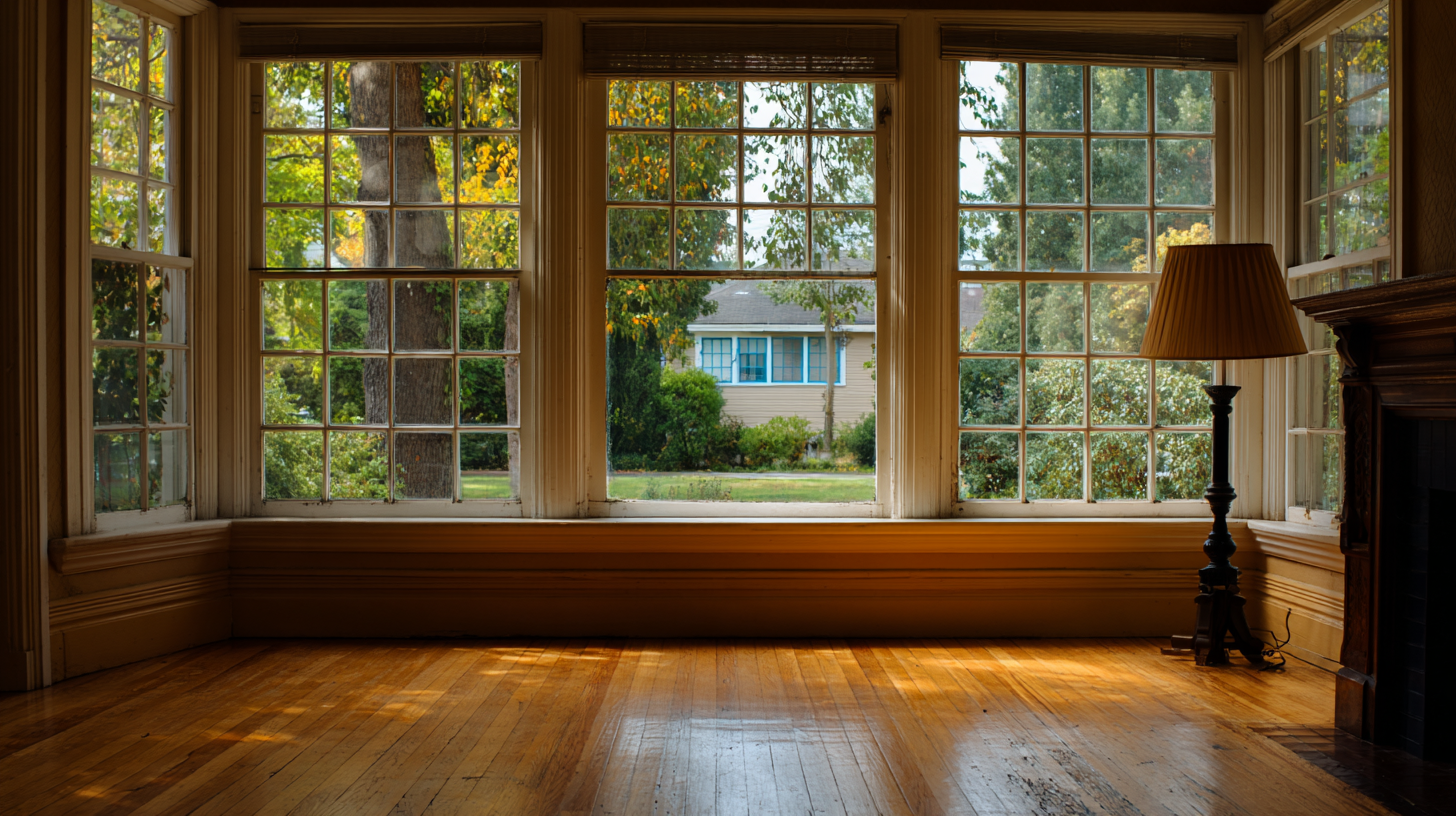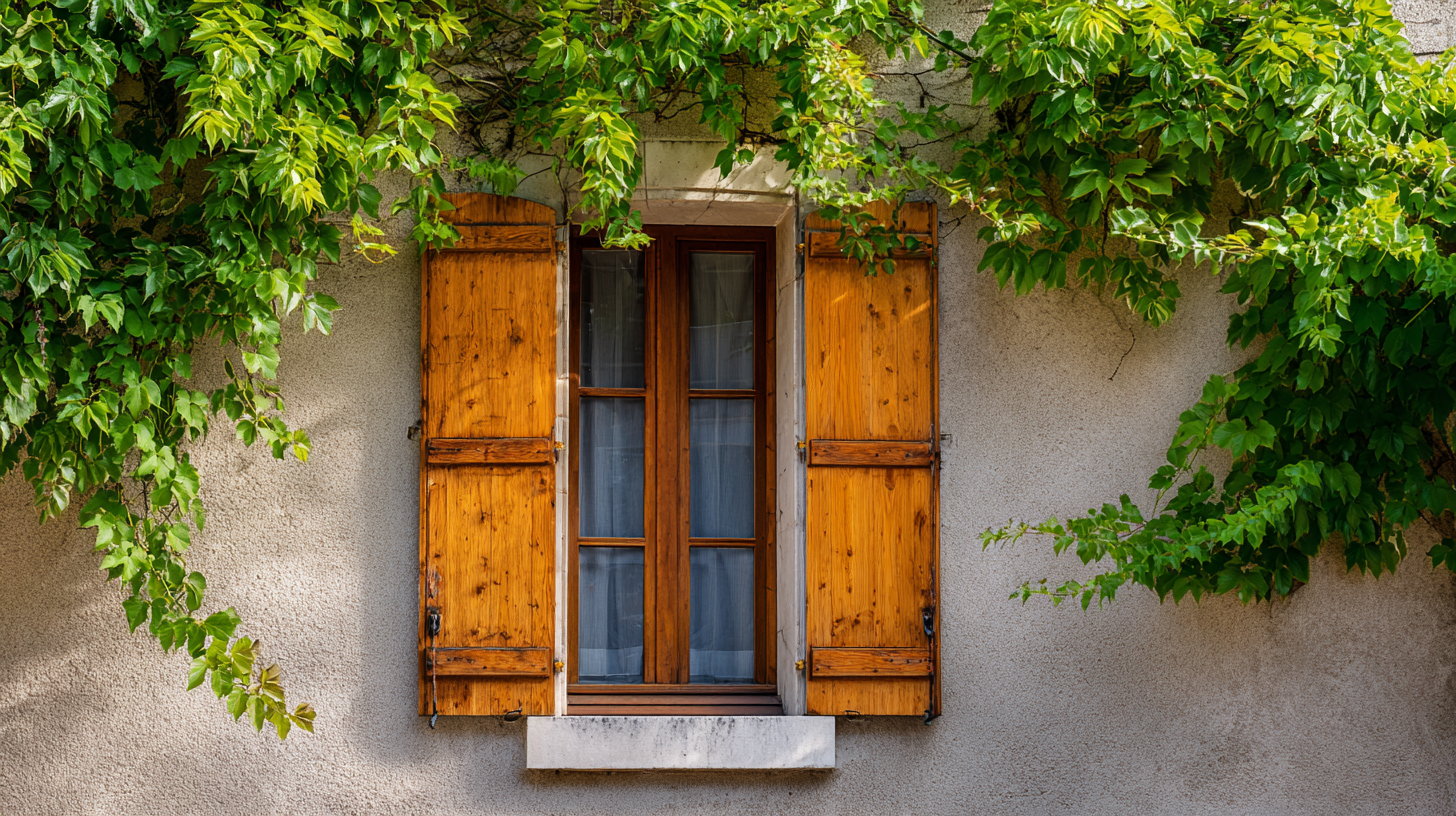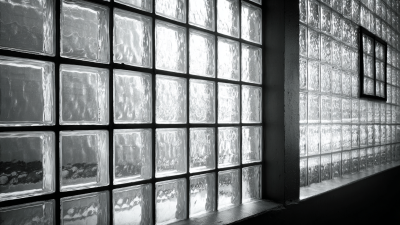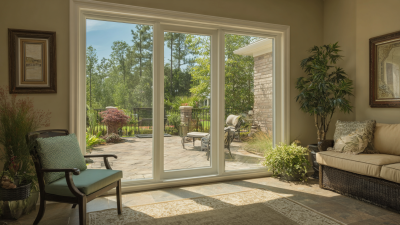Unlocking the Best Window Deals: A Comprehensive Guide to Maximizing Your Home's Energy Efficiency
In today's market, finding the best window deals is not just about price, but about maximizing your home's energy efficiency, which has become an increasingly critical concern among homeowners. According to the U.S. Department of Energy, poorly insulated windows can account for up to 30% of a home's heating and cooling energy use. By investing in high-quality, energy-efficient windows, homeowners can significantly reduce their energy bills, enhance indoor comfort, and ultimately increase their property value. Reports from the Energy Information Administration indicate that modern, energy-efficient windows can save homeowners between $125 to $465 annually in energy costs. This guide will explore how to identify and take advantage of window deals that not only fit your budget but also help you achieve long-term energy savings, thereby creating a more sustainable living environment.

Evaluating the Energy Efficiency Ratings of Modern Windows
 When considering new windows for your home, understanding energy efficiency ratings is crucial for maximizing comfort and reducing energy costs. The most common rating system, the Energy Star label, helps homeowners identify windows that meet stringent energy performance criteria. This label considers factors such as U-factor, Solar Heat Gain Coefficient (SHGC), and Visible Transmittance (VT), all of which play significant roles in a window's ability to conserve energy. By choosing windows with lower U-factors, you can minimize heat loss during the colder months, while an optimal SHGC can help control solar heat gain, keeping your home cooler in the summer.
When considering new windows for your home, understanding energy efficiency ratings is crucial for maximizing comfort and reducing energy costs. The most common rating system, the Energy Star label, helps homeowners identify windows that meet stringent energy performance criteria. This label considers factors such as U-factor, Solar Heat Gain Coefficient (SHGC), and Visible Transmittance (VT), all of which play significant roles in a window's ability to conserve energy. By choosing windows with lower U-factors, you can minimize heat loss during the colder months, while an optimal SHGC can help control solar heat gain, keeping your home cooler in the summer.
Additionally, it's essential to evaluate the window's insulation properties and frame materials. Double or triple-glazed windows, along with low-emissivity (Low-E) coatings, can significantly enhance thermal performance. These features work together to ensure that your home remains energy efficient throughout the year, reducing the load on heating and cooling systems. As you compare window options, focus on these energy efficiency metrics to make informed decisions that not only contribute to environmental sustainability but also enrich your living space with better insulation and comfort.
Key Features to Look for When Selecting Energy-Efficient Windows
When selecting energy-efficient windows for your home, several key features are crucial to maximizing energy savings. First and foremost, look for windows with a high Energy Star rating, which signifies that they meet or exceed energy efficiency guidelines set by the U.S. Environmental Protection Agency. Additionally, consider the window's U-factor, which measures insulation effectiveness; lower U-factors indicate better insulating properties and can significantly reduce heating and cooling costs.
Another important feature is the type of glazing used in the windows. Double or triple glazing provides enhanced thermal performance compared to single-pane windows. The space between the panes can be filled with argon or krypton gas, which further reduces heat transfer. Low-emissivity (Low-E) coatings are also essential, as they reflect infrared light while allowing visible light to enter, thus keeping your home warmer in the winter and cooler in the summer. Finally, don’t overlook the frame material; options such as fiberglass or vinyl offer better insulation than traditional wood or aluminum frames, contributing to your home's overall energy efficiency.
Unlocking the Best Window Deals: A Comprehensive Guide to Maximizing Your Home's Energy Efficiency
| Window Type | U-Value (W/m²K) | SHGC | Visible Transmittance | Frame Material | Energy Star Rating |
|---|---|---|---|---|---|
| Double Glazed | 1.2 | 0.30 | 0.70 | Vinyl | Yes |
| Triple Glazed | 0.8 | 0.25 | 0.60 | Wood | Yes |
| Low-E Coated | 1.1 | 0.32 | 0.75 | Fiberglass | Yes |
| Casement Windows | 1.4 | 0.27 | 0.72 | Aluminum | Yes |
| Sliding Windows | 1.5 | 0.29 | 0.68 | Vinyl | Yes |
Maximizing Savings: Understanding Window Installation Costs and Best Deals
When considering new windows for your home, understanding installation costs is crucial for maximizing your energy efficiency savings. According to the U.S. Department of Energy, up to 30% of a home's heating and cooling energy can be lost through inefficient windows. Therefore, investing in high-quality, energy-efficient windows is not only a matter of comfort but also a cost-effective strategy in the long run. The average cost of window installation ranges from $300 to $1,000 per window, depending on factors like frame material and window style.
Tip: Look for Energy Star-rated windows, as they are designed to reduce energy bills. These windows can save homeowners anywhere from $125 to $465 annually, depending on the climate and home specifications.
Additionally, timing your purchase can significantly affect costs. Many manufacturers offer seasonal discounts during the fall and spring when demand is lower. Research shows that by shopping during these off-peak times, homeowners can save up to 15% on installation fees.
Tip: Always obtain multiple quotes before making a decision. This not only ensures you're getting the best price but also allows you to compare the quality of materials and warranties offered by different companies.
Exploring Innovative Technologies in Energy-Efficient Window Design
Innovative technologies in energy-efficient window design are revolutionizing the way we think about home energy consumption. Recent studies highlight advancements such as electrochromic and thermochromic glass, which can automatically adjust their tint based on temperature and sunlight exposure. This intelligent glass not only enhances comfort by reducing glare and heat ingress but also lowers the demand on heating and cooling systems, leading to significant energy savings.
Additionally, research at leading institutions is pushing the boundaries of window technology. For instance, a study conducted in collaboration with Singapore National University has explored solar interface evaporation, which may offer novel ways to integrate energy generation directly into window designs. These breakthroughs pave the way for windows that actively contribute to a building’s overall energy efficiency, aligning with the growing market trends forecasted to expand exponentially over the next decade. As strides are made in smart window technologies, homeowners can look forward to enhanced energy management solutions that not only optimize comfort but also promote sustainability.
Energy Efficiency of Different Window Types
Comparative Analysis: Traditional vs. Advanced Window Solutions for Homes
When considering window solutions for enhancing a home's energy efficiency, a comparative analysis between traditional and advanced options reveals significant differences in performance and cost-effectiveness. Traditional single-glazed windows may seem appealing due to their lower upfront costs, but they lack insulation and can lead to higher heating and cooling expenses over time. The limited thermal performance of these windows not only increases energy bills but also contributes to a less comfortable indoor environment.

In contrast, advanced window solutions, such as double or triple-glazed units with gas-filled insulative layers, provide superior thermal efficiency. These windows are designed to minimize heat transfer, maintaining a stable indoor temperature while reducing reliance on heating and cooling systems. Additionally, modern options may include low-emissivity (low-E) coatings, which reflect infrared light, further enhancing energy savings.
While they may require a higher investment initially, the long-term benefits of reduced energy costs and increased home comfort make advanced windows a smart choice for homeowners aiming to maximize their energy efficiency.
Related Posts
-

Exploring Window Replacements Trends at the 138th Canton Fair China 2025
-

Transform Your Space: The Ultimate Guide to Installing Glass Block Windows for Style and Light
-

Innovation in Home Windows Industry at 2025 China Import and Export Fair
-

Exploring the Best Window Deals for Energy Efficiency and Cost Savings
-

Transform Your Home with Sliding Patio Doors: Innovative Designs for Modern Living
-

Essential Tips for a Smooth Patio Door Installation Experience: Expert Insights Revealed
